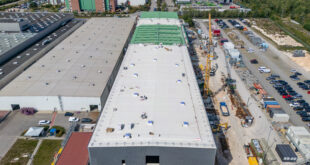In order to put the six new BMW M4 DTMs on the grid for the DTM season-opener on May 6, there is a very intense period of development that needed to happen. Powerful computers help to run computer simulations and the development team relied heavily on computational fluid dynamics (CFD).
Every little detail matters in creating a new race car. Every little decision can mean a fractions of a second on the circuit. Powerful computers and CFD flow calculations ensure that BMW Motorsport engineers leave nothing to chance. They are able to simulate the effects of changes to the individual parts of each car before the components have even been built.
They calculate by splitting the model into a grid of 500 million three-dimensional cells and separately analysing the virtual airflows through them. BMW Motorsport’ experienced aerodynamicists then interpret the calculated values and make recommends changes for the components. If the part has proved itself during simulation, variations are tested in the wind tunnel on a scaled down, 60 per cent model. The computer-aided flow simulation is not intended to replace wind tunnel work, but complements it.
The preliminary calculations are dealt with by a number of high-performance computers. BMW Motorsport uses the BMW cloud system to dynamically adjust the number of computers in use, and adjust the load for other users within the BMW Group. This bandwidth and availability of computing power means that it is possible to perform multiple calculations at the same time. This allows the BMW M4 DTM and other BMW Motorsport racing cars to be even more efficient and precise.
 BMW.SG | BMW Singapore Owners Community The Ultimate BMW Community – Established Since 2001
BMW.SG | BMW Singapore Owners Community The Ultimate BMW Community – Established Since 2001














